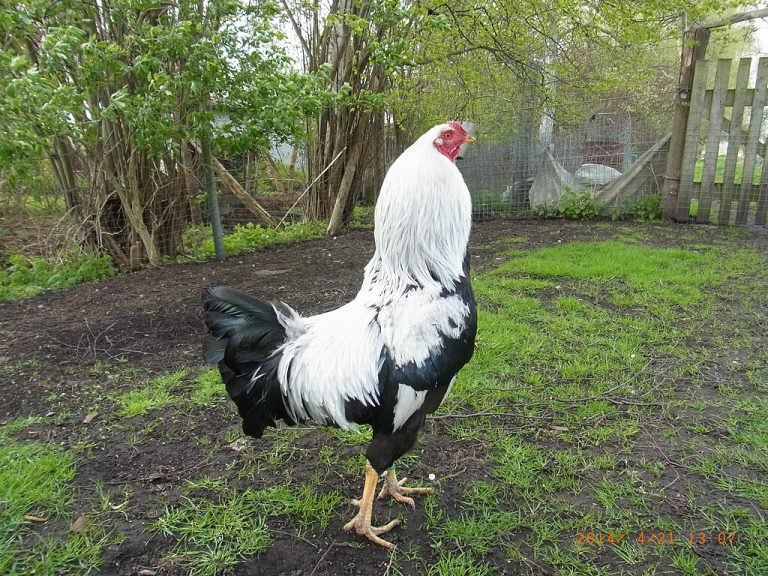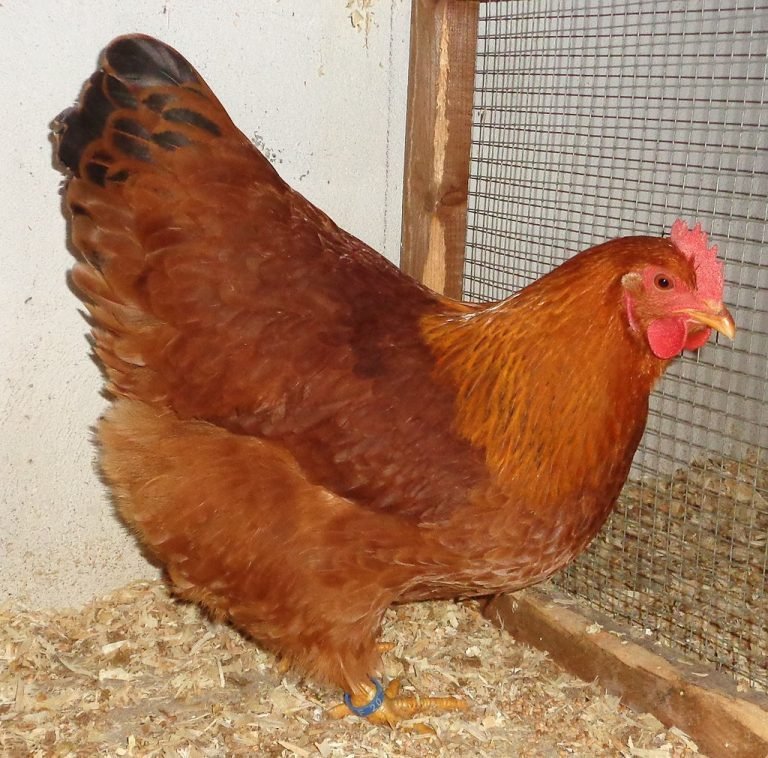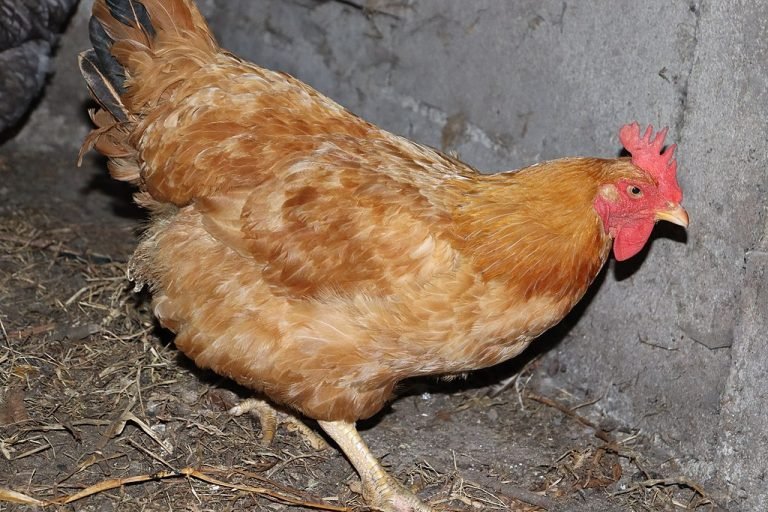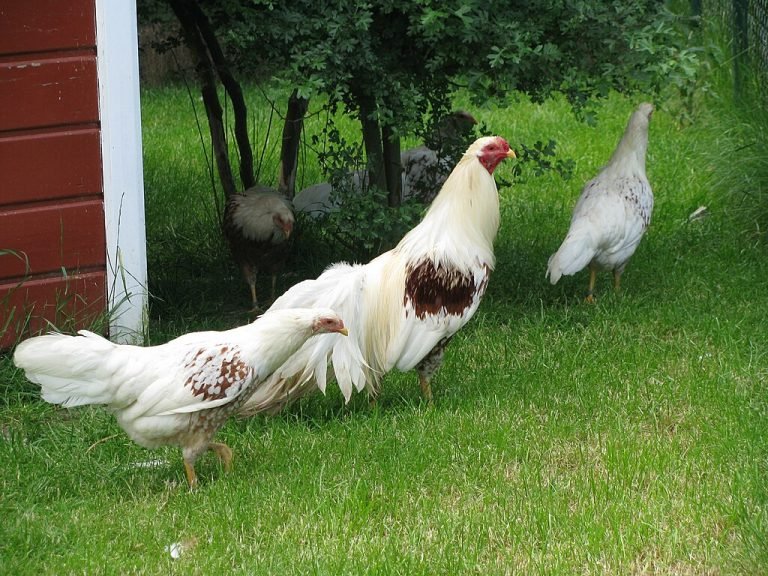The Japanese Bantam is a small ornamental chicken breed with distinct features and colorful plumage. Known for their miniature size and gentle temperament, these chickens make charming pets and are popular among poultry enthusiasts.
History
The Japanese Bantam Chicken Breed is steeped in history, known for its long-standing tradition and cultural significance in Japan. This unique breed captivates chicken enthusiasts with its small size and ornamental feather patterns, making it a popular choice among poultry lovers around the world.
- Japanese Bantam chickens have a fascinating history that dates back to ancient Japan. These ornamental birds first appeared in the early 17th century in the city of Nagoya, Japan.
- They were originally bred by the Japanese nobility who took great pride in their ornamental value and stunning plumage.
- Japanese Bantams were so highly regarded that they were given as gifts to members of the Japanese Imperial family and other important dignitaries.
- The breed almost faced extinction during World War II due to the scarcity of resources, but thankfully a few dedicated breeders managed to preserve the species.
- Today, Japanese Bantams are cherished for their unique appearance and delightful temperament, making them a popular choice among chicken enthusiasts worldwide.
Interesting Facts
- Japanese Bantams have gained popularity not only for their appearance but also for their unique characteristics. Here are some intriguing facts about this breed:
- They are often referred to as the “bonsai of the chicken world” due to their small size and exquisite beauty.
- Japanese Bantams are known to be excellent mothers, taking great care of their chicks and imparting their gentle temperament to the next generation.
- These chickens are well-suited for exhibition and are commonly seen in poultry shows around the world.
Japanese Bantam chickens have a rich history, captivating appearance, friendly temperament, and specific care requirements. Whether you’re looking for a delightful addition to your backyard flock or a charming ornamental bird, Japanese Bantams are sure to bring joy and beauty to your poultry endeavors.
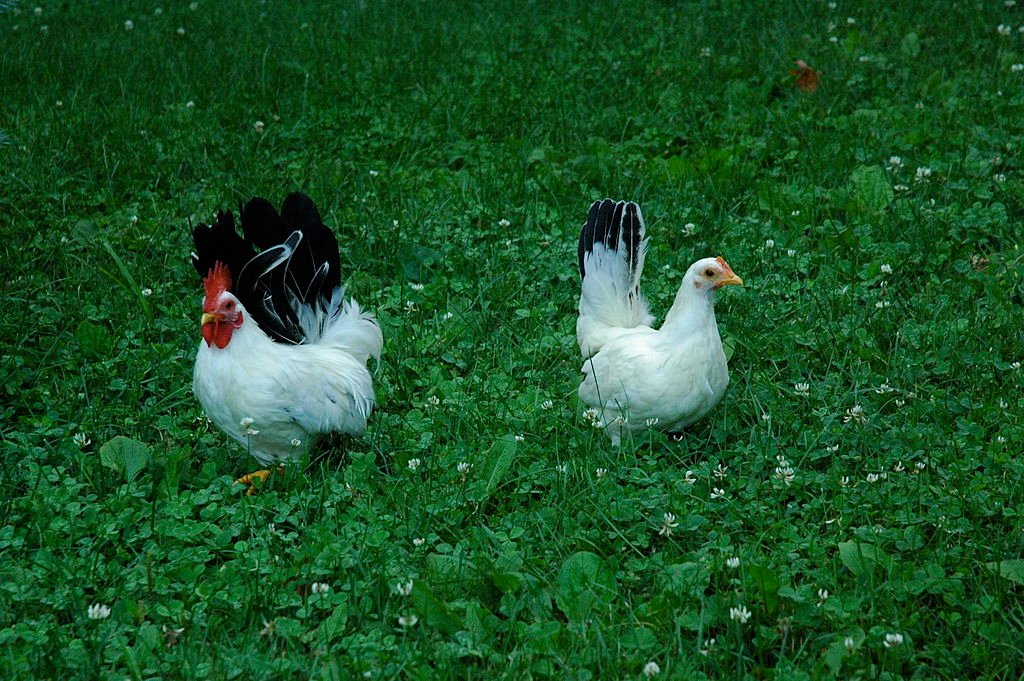
General Characteristics
If you’re in search of an adorable and unique chicken breed to add to your flock, look no further than the Japanese Bantam. This compact bird is known for its striking appearance and charming demeanor. In this blog post, we will delve into the general characteristics that make the Japanese Bantam a beloved breed among chicken enthusiasts.
Small Size With Striking Features
- The Japanese Bantam is a small breed, weighing an average of 26 ounces.
- With its short and stocky physique, it stands out from other chicken breeds.
- These birds have a distinctive upright stance, which adds to their overall elegant appearance.
- The Japanese Bantam comes in various feather colors, including black, white, buff, and cuckoo.
- Their feathers are lustrous and soft, making them ideal for exhibition purposes.
Friendly And Docile Nature
- The Japanese Bantam is known for its friendly and docile temperament, making it a popular choice as a pet chicken.
- They are gentle birds and interact well with their human caretakers, making them suitable for families with children.
- Despite their diminutive size, they are not easily intimidated by larger chicken breeds and often act fearlessly when faced with challenges.
- Japanese Bantams are sociable birds that enjoy the company of humans and other chickens alike.
Exceptional Brooding Skills
- One characteristic that sets the Japanese Bantam apart from other breeds is their exceptional brooding skills.
- They possess a strong maternal instinct and are excellent mothers to their chicks.
- When given the opportunity, Japanese Bantams will go broody and make dedicated and attentive mothers, taking excellent care of their offspring.
- Their small size makes them ideal for hatching eggs and raising chicks, as they require less space and resources compared to larger breeds.
Low Maintenance Requirements
- Japanese Bantams are relatively easy to care for and have low maintenance requirements.
- Due to their small size, they have modest appetites, making feed and upkeep costs more affordable.
- They adapt well to various climates, tolerating both cold and warm temperatures, but should be provided with suitable shelter and protection from extreme weather conditions.
- As with any chicken breed, regular health checks, proper nutrition, and a clean living environment are essential to maintain their well-being.
These general characteristics highlight the appeal of the Japanese Bantam as a delightful addition to any backyard flock. Their small size, striking appearance, friendly nature, exceptional brooding skills, and low maintenance requirements make them a perfect choice for chicken enthusiasts of all levels.
Whether you are seeking a pet chicken or a show-quality bird, the Japanese Bantam is sure to capture your heart.
Temperament
The temperament of Japanese Bantam chickens is characterized by their friendly and docile nature. These chickens are known for their calm and gentle disposition, making them a popular choice among chicken enthusiasts. Whether you are a beginner or an experienced chicken keeper, the Japanese Bantam breed is an ideal option for those seeking a friendly and easy-to-handle chicken breed.
Let’s explore the temperament of Japanese Bantam chickens in more detail:
Curious And Sociable
- Japanese Bantams are naturally curious birds, always investigating their surroundings with great interest.
- They enjoy interacting with their owners and can easily become tame and sociable with regular handling.
- These chickens are known to form strong bonds with humans and often seek out their company.
Good With Children And Other Animals
- The friendly nature of Japanese Bantams makes them suitable for families with children.
- These chickens generally tolerate gentle handling from children, making them a great choice for educational and interactive experiences.
- They can also coexist peacefully with other backyard animals, such as dogs or cats, as long as proper introductions and management are provided.
Non-Aggressive
- Japanese Bantams are known for their non-aggressive behavior, both towards humans and other chickens.
- They rarely exhibit aggressive tendencies and are unlikely to engage in fights or overly dominant behaviors.
- This aspect of their temperament makes them an excellent addition to a mixed flock or a community setting.
Gentle And Calm
- Characterized by their gentle and calm nature, Japanese Bantams are not easily startled.
- They are not prone to sudden bursts of energy or hyperactive behavior.
- This calm temperament contributes to their ease of handling and makes them a delight to be around.
Trusting And Bonding
- Japanese Bantams have a remarkable ability to form bonds with their owners.
- With regular interactions and consistent care, these chickens quickly develop trust and rely on their human companions.
- This trusting nature makes them an ideal choice for those seeking a pet-like chicken breed.
In a nutshell, Japanese Bantam chickens are a wonderful breed with a temperament that sets them apart. Their friendly, calm, and sociable nature makes them a popular choice for chicken keepers of all levels of experience. Whether you are looking for a family-friendly breed or a gentle companion in your backyard, the Japanese Bantam is sure to win your heart with its well-rounded temperament.
So, why not consider adding these charming chickens to your flock?
Comb Types
Japanese Bantam Chickens are known for their unique comb types, including single, walnut, and rose combs. These adorable birds have compact bodies and a wide range of comb varieties, adding to their charm and appeal.
Single Comb
- The single comb is the most common comb type found in Japanese Bantam chickens.
- It is a single, straight-edged comb that extends from the top of the chicken’s head to its beak.
- This type of comb is prone to frostbite in cold climates, so it is important to provide proper shelter and protection for the chickens during winter.
Rose Comb
- The rose comb is characterized by a low, broad shape with many small, rounded bumps.
- This comb type is less prone to frostbite compared to the single comb, making it suitable for colder climates.
- The rose comb also provides better protection against potential injuries as it sits closer to the chicken’s head.
Pea Comb
- The pea comb is smaller and narrower compared to the single and rose combs.
- It has three distinct sections or “peas” that give it its name.
- The pea comb is considered ideal for Japanese Bantams as it combines the benefits of both the single and rose combs.
- It offers good protection against frostbite and injury while allowing for efficient heat dissipation.
Walnut Comb
- The walnut comb is a unique comb type that is wider and flatter than the other combs.
- It resembles the shape of a walnut, hence its name.
- This comb type is relatively rare in Japanese Bantams, but it is highly valued for its aesthetic appeal.
- While the walnut comb provides some protection against frostbite, it may not be as efficient in extreme cold weather.
Silkie Comb
- The Silkie comb is a small, low-lying comb with a slightly curved shape.
- It is commonly found in Silkies, which are a variety of Japanese Bantams.
- The Silkie comb is ideal for hot climates as it allows for proper heat dissipation while offering some protection against frostbite.
V Comb
- The V comb is a unique comb type that resembles the letter “V” when viewed from the top.
- It is characterized by two rows of spikes that converge into a single point at the bottom.
- The V comb is rare in Japanese Bantams and is mainly found in exhibition birds.
- It is not as well-adapted to extreme weather conditions and may require additional protection in cold climates.
Japanese Bantam chickens come in various comb types, each with its own advantages and considerations. Whether it’s the traditional single comb, protective rose comb, efficient pea comb, unique walnut comb, heat-dissipating Silkie comb, or the rare V comb, there is a comb-type suitable for every climate and aesthetic preference.
Proper care and consideration should be given to ensure the well-being of these charming and distinctive chickens.
Conclusion
The Japanese Bantam chicken breed is a fascinating addition to any flock. With its unique appearance and friendly temperament, it is sure to captivate chicken enthusiasts and casual observers alike. This breed’s small size makes it suitable for urban or small backyard environments, while its striking colors and feather patterns add a touch of beauty to any landscape.
The Japanese Bantam’s docile nature also makes it a great choice for families with children, as they are known to be gentle and easy to handle. Whether you are an experienced poultry keeper or new to chicken keeping, the Japanese Bantam is a breed worth considering.
By providing proper care and attention, these delightful chickens will reward you with their companionship and delightful personality. Make your backyard a haven for these exquisite birds and enjoy the joys and benefits of owning the Japanese Bantam chicken breed.

